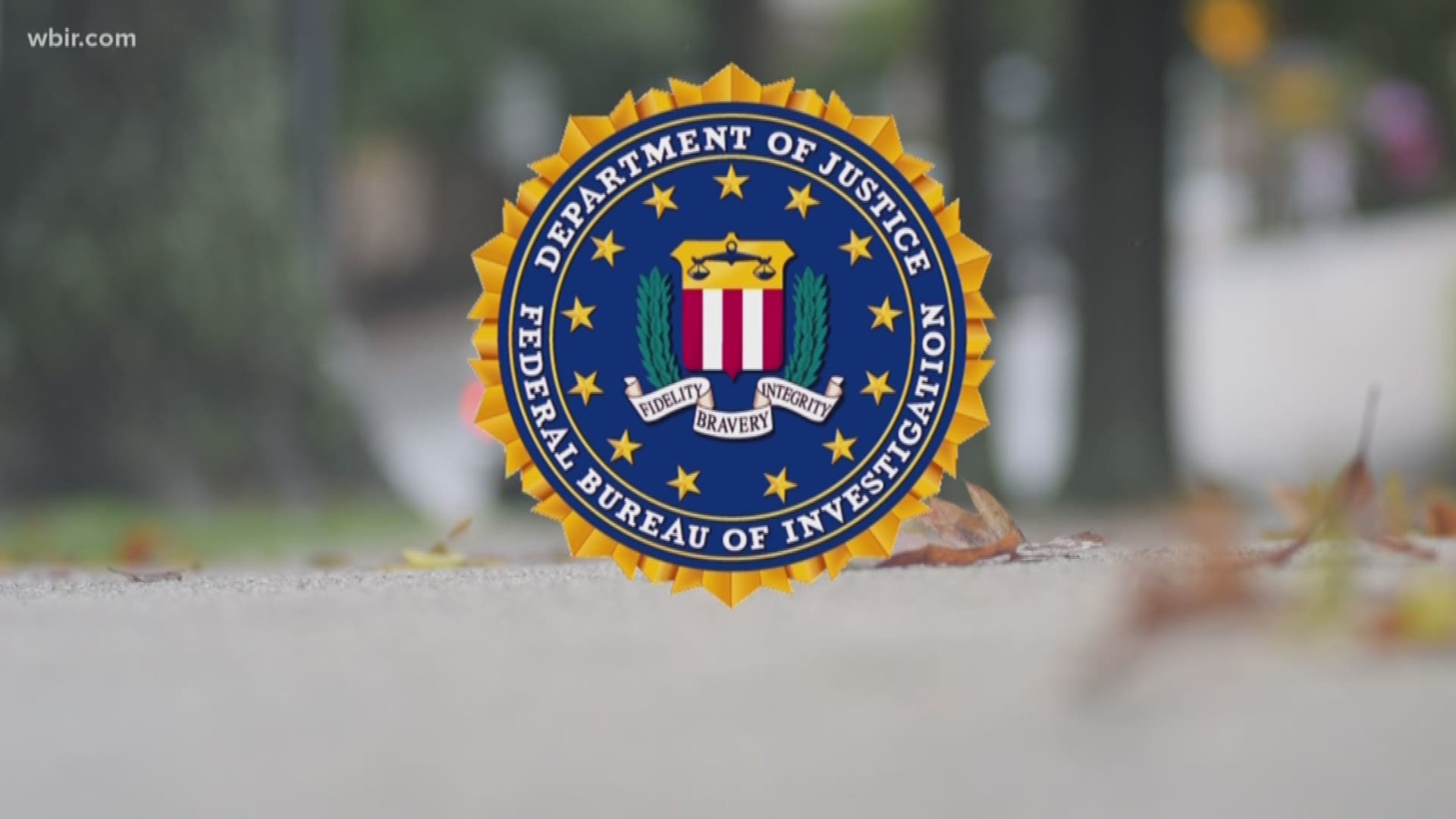WASHINGTON – The estimated number of violent and property crimes fell slightly last year across the nation, after two years of gains in the violent-crime rate, according to FBI figures released Monday.
Here in Knoxville the national statistics for 2017 reflected similarly with most categories seeing decreases or slight increases -- with the exception of reported murders and nonnegligent manslaughter cases seeing a significant spike.
Knoxville reported close to twice as many murders and nonnegligent manslaughter cases with 33 reported incidents in 2017, compared to 18 in 2016. Overall, the level of violent crime remained relatively the same -- with robberies, burglaries and larceny seeing a slight drop.
Leaders with the 'Save Our Sons' initiative said the new report is saddening.
"Naturally, you're saddened when you hear that," Tatia Harris, a Manager for Save Our Sons, said.
Harris said it's hard to figure out why these numbers are the away the are.
"I don't think there is an answer because violence is a complex issue," Harris said.
Save Our Sons has been holding community meetings to get a sense of what the community is feeling.
"One things that came out of that is that Knoxville is hopeful. As a parent and a grandmother you have to remain hopfull," Harris said.
Tennessee as a whole also did not improve with the rest of the country. Tennessee's violent crime rate rose in 2017 to 651.5 incidents per 100,000 people, compared to 638.5 the previous year.
In addition to declining numbers across the country, the rates of crimes when accounting for the population also declined across the U.S. The violent-crime rate was 392.9 offenses per 100,000 residents last year, which was down 0.9 percent from a year earlier, according to the FBI. The property-crime rate was 2,362.2 offenses per 100,000 residents, which was down 3.6 percent, according to the FBI.
The decline occurred during the first year of President Donald Trump’s administration after he ran for the White House in 2016 on a law-and-order message and pledged to address the problem of violent gangs.
“President Trump took office with a mission, a mandate from the American people to restore public safety,” Attorney General Jeff Sessions said Monday in announcing the statistics at a speech in Hoover, Alabama.
Sessions credited three of Trump’s executive orders with helping to bolster law enforcement by enhancing officer safety, working to dismantle transnational criminal organizations and fighting crime domestically. He cited public-safety partnerships between federal and local authorities in:
•Compton, California, where police developed a plan to reduce violence that, in three years, led to 1,124 felony arrests and the seizure of 445 firearms, 80 pounds of explosives, 88 pounds of cocaine, 13 pounds of heroin and 18 pounds of fentanyl.
•Milwaukee, where police identified a violent crime hot spot and allocated resources to reduce homicides 17 percent and non-fatal shootings 38 percent.
•Little Rock, Arkansas, where police hired additional crime analysts to trace connections between crimes. By July, homicides decreased by 22 percent and overall violent crime was down by 25 percent.
The statistics released Monday are part of the FBI’s Uniform Crime Reporting Program, which collected data from 16,655 city, county, college, state, tribal and federal law-enforcement agencies last year. The agencies reported violent crimes of murder, non-negligent manslaughter, rape, robbery and aggravated assault. Property crimes are burglary, larceny-theft, motor-vehicle theft and arson.
Ames Grawert, senior counsel at the Brennan Center for Justice at New York University’s law school, said the drop in the overall crime rate was driven in large part by declines in property crime. But a Brennan Center analysis found declines in crime rates were especially pronounced in cities with populations over 1 million, where total murders decreased by 8.1 percent.
“Crime declined nationwide last year, consistent with our earlier analyses of 2017 data in the nation’s 30 largest cities. That’s the good news,” Grawert said. “The bad news is that even while crime is falling, the number of Americans incarcerated remains near-record highs. Now is the time to address the problem.”

